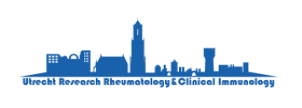Uncovering the pathogenesis of psoriatic arthritis
A prospective cohort of psoriasis patients was explored in order to clinically distinguish subjects with Psoriasis (Pso), Psoriatic Arthritis (PsA), and Pso subjects who progress to PsA. Subjects in the study were characterised using a set of clinical and imaging tools. Profiling of subjects was done to identify signatures that distinguish the disease groups, and possible markers of disease progression and conversion. By collaborating on financial and scientific aspects with our public and private partner a unique investigator-initiated research programme was created.
Psoriatic arthritis is a chronic inflammatory disease with potentially severe impact on quality of life. There are numerous therapeutic options available, yet in clinical practice most often a trial-and-error approach is used to treat patients. Developing a better understanding of the disease pathogenesis can lead to better treatment options (novel treatment) as well as more personalized approach to treating the individual patient.
To uncover the common and unique immunologic drivers of the disease, a broad, unbiased (systems biology) approach to study psoriasis and psoriatic arthritis will be performed: data integration from multiple layers of clinical data (including novel imaging techniques) and multiple layers of immunologic data from different tissue sites and cell types.
Deliverables within this project were based on study start up, enrolment, sample collection and informatics setup, biomarkers analysis and confirmation. To identify novels proteins involved in the pathogenesis of, a head-to-head comparison of patients with Pso versus PsA was performed.
Novel imaging tools were used to assess the frequency of MRI-detected enthesitis. A substantial incidence of MRI-detected enthesitis in PsA was detected, occurring more frequently compared to Pso. Proteomic (serum) signature was shared between PsA and Pso patients, pointing towards a single psoriatic spectrum of disease. Cell-phenotypic signature was heterogenic between patients, however some specific differences were detected in cell subsets with regard to specific expression of certain marker-sets, or activation status. Clinical severity (PASI, SJC) was correlating with an increase or decrease in specific cell subsets. Transcriptomic signature of the skin (RNAseq) showed a large number of differentially expressed genes between lesional and non-lesional skin, but irrespective of disease; no gene was differentially expressed between Pso and PsA patients.
Furthermore, microbiome signature of the gut showed a reduced average of total microbiota diversity in Pso and PsA compared to AS (not statically significant). No difference in fecal microbiota composition was detected. Microbiome signature of the skin showed a higher total diversity in lesions compared to unaffected areas. A distinct microbiota composition was detected in affected skin compared to unaffected in Pso and PsA. No clear differences in skin microbiotica composition was found between Pso and PsA. The first data integration analyses of ciruclatome and skin tanscriptome showed significant correlations in expression of some genes/proteins between these layers. Further multi-omics data integration is still ongoing.



